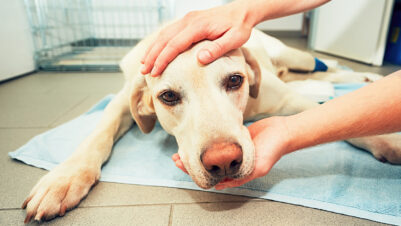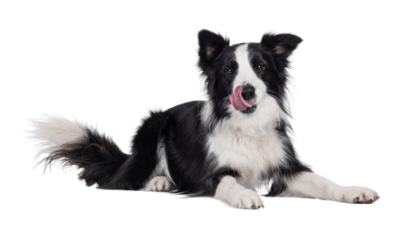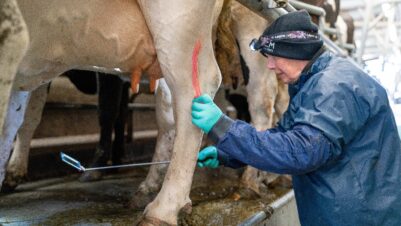THIS SECOND OV CONFERENCE RAISED CONSIDERABLE ANGST among some veterinary surgeons who are concerned about the future of veterinary practice.
Simon Hall (APHA) opened the first day with a declaration that he was pleased with the developments to date and that engaging with a commercial, modern training package was a good decision.
There are now 30 OVs for every one APHA veterinary surgeon. Each Official Veterinarian is charged with safeguarding animal welfare and has a higher level of responsibility beyond an individual owner, farmer or animal. The step-by-step programme that has been introduced means every OV is at a similar standard.
In conversation with David Babington, managing director of Improve International, which runs the OV programme, he confirmed that there are now 12,075 registered OVs, 2,878 of them new.
When the programme started in August 2014, the panel lists of veterinary surgeons was outdated with many individuals having retired or stopped being actively involved in the specific areas.
E-mail and text contact with registered individuals is now ongoing and it is important that veterinary surgeons advise Improve if their details change. It is the individual veterinary surgeon who is registered, not a veterinary practice.
On New Year’s Day or thereabouts, some 2,500 vets who are enjoying “grandfather rights” to carry out TB testing will receive a reminder that they will have to carry out revalidation by 31st March 2017. Further reminders will be sent at monthly and then weekly intervals.
If stored individual contact details are outdated and the revalidation date passes without attention, the individual vet will no longer be able to carry out TB testing.
The cost is £99 (plus VAT) and revalidation will take place every two years. In total there are 2,915 vets currently authorised by APHA to carry out TB testing across the UK.
During later discussions, concern was expressed from the floor about the impact on a veterinary practice if sufficient members of a practice were not validated to accommodate the increasing frequency of testing on clients’ herds and the commercial impact on a practice if outside vets had to be called in, or all TB testing carried out by another practice.
If TB work is lost to a practice, a reduction in other work is likely to follow. Simon Hall made it clear that these commercial aspects were not the concern of APHA but that an alternative, already adopted by APHA, was to train non-veterinary surgeons to carry out the task.
Veterinary advice on prevention and control would follow. If low numbers of “grandfathers” revalidate, it would appear that there may be urgent consideration of paravet TB testers next year.
TB strategy update
Alan Huxtable (veterinary head of TB delivery, APHA) provided an update on the current control and TB strategy in Scotland, England and Wales. In Scotland there are from 10 to 20 Official TB Free Status Withdrawn herds each year, with routine four- yearly testing and annual testing for high-risk herds.
Full market compensation is paid for test failures and control is centred on risk-based surveillance with no recognised wildlife transmission. England has low-risk (21,000 herds), edge (7,200 herds) and high-risk (23,000 herds) management zones. Emphasis includes the reduction and elimination of the disease spread from badgers.
Farm reports of the herd TB history and cattle movement summaries are to be made available to farmers and their veterinary surgeons for new breakdown herds in the high-risk and edge areas. APHA would like to receive the views of veterinary surgeons on the need for powers to enforce herd biosecurity and measures to reduce TB re-infection risks.
From last April, farmers in Wales receive 100% market value of TB test failure animals up to a maximum of £15,000. This figure is reduced if removal of the animals is longer than 10 days. If control recommendations are not acted upon, the compensation is reduced for subsequent test failures.
A three-hour visit from an OV, to advise on breakdown management, is funded by Cymorth TB. A consultation on further proposals is due.
In England a series of roadshows under the banner “TB Farm Advice” has been organised by Improve in conjunction with DEFRA/APHA. These are designed to provide veterinary surgeons with the latest information regarding how to advise farm clients on the best way to protect their herds from TB.
Further information will be available at the roadshows, but it was not indicated whether the farmer would pay for the visit and advice or whether there would be programme support.
M. bovis
Jo Wheeler (APHA) explained that it is a requirement for OVs to report cases of suspected and confirmed Mycobacterium bovis infection an any mammal. At the end of August 2016, DEFRA launched an open consultation entitled Bovine TB: tackling infection in pigs, sheep, goats, captive deer and South American camelids.
Cases to date show the same M. bovis spoligotype in other mammals as the home range spoligotype in cattle. Cases in cats include infected lymph nodes due to bite wounds, respiratory distress due to lung infection and eye conjunctivitis.
Ingestion and inhalation of infected material occurs in dogs, is much less common than cats and euthanasia is generally recommended. Cases in outdoor pigs and wild boar are detected at slaughter and a surveillance programme at slaughterhouses is being discussed.
Movement restrictions apply and compensation is available. Sheep and goat cases are also detected at slaughter with movement restrictions, skin tests and the possible use of a blood test.
Additionally, a milk pasteurisation notice is served with compensation available for test reactor animals but not slaughterhouse detection.
Camelids often look healthy initially, but post-mortem examination reveals generalised TB lesions. Human infection from the camelid breathing out the organism from lung lesions is recognised. Some deer herds remain under permanent movement restriction.
A grey seal with an unresponsive bite wound infected with M. bovis was located in Cornwall but had the South Wales spoligotype.
Dr Jonathan Kahn (APHA) discussed the use of spoligotyping in TB breakdown herd management.
There are 44 different spoligotypes (spacer oligotype) and these are stable, whereas the VNTR (Variable Number Tandem Repeats) are more variable and show mutations with (a) being the most common.
The genotype combines the spoligotype with the VNTR eg 15a. Genotype maps are available for each area with some counties having several home range territories, some distinct in boundary and some overlapping. For an individual herd the home range of an M. bovis genotype is known and any reactors found to have a different genotype can be expected to have been brought in.
In many cases the original location of the disease can be identified. A bovine infected in Mid Wales and detected in Dorset may help to explain how the disease breakdown has occurred.
Badgers within a local area are expected to be infected with the same genotype as the cattle. It can be helpful to demonstrate that the disease has occurred from a local, home range source.
Prevention strategies can be targeted on the genotype histories of the herd. Further information is available from “Bovine TB Epidemiology and Surveillance in GB 2015”.
Revalidation panel
A panel of John Douglass (Improve), Simon Hall, Sue Hay and Natalie McKellar (APHA) discussed the OV validation and revalidation involving a short online course with case logs demonstrating competence.
Revalidation meets the same standards as new OVs. If revalidation is not satisfactory, there is consistency from APHA in reviewing individual circumstances. Missed target dates due to ill health and pregnancy were highlighted as specific circumstances that may be relevant.
APHA can now map the location of OVs to the needs of particular panels. The content of the training is subject to annual review to take account of legislation changes and technical developments.
The “Essential Skills” panel has to be revalidated by 31st March 2019 and is due every five years. The point was emphasised that the Official Veterinarian programme is halfway through a planned five-year transition.
Further information is available at
www.improve-ov.com










